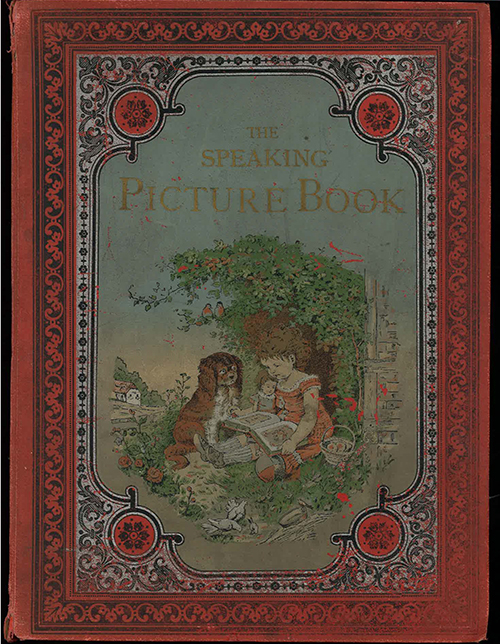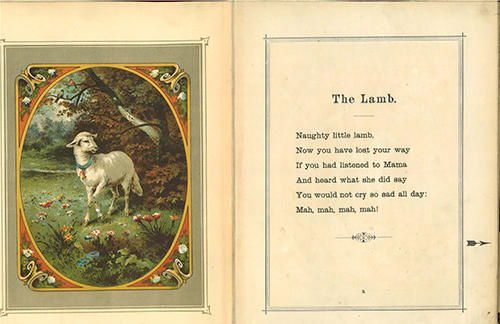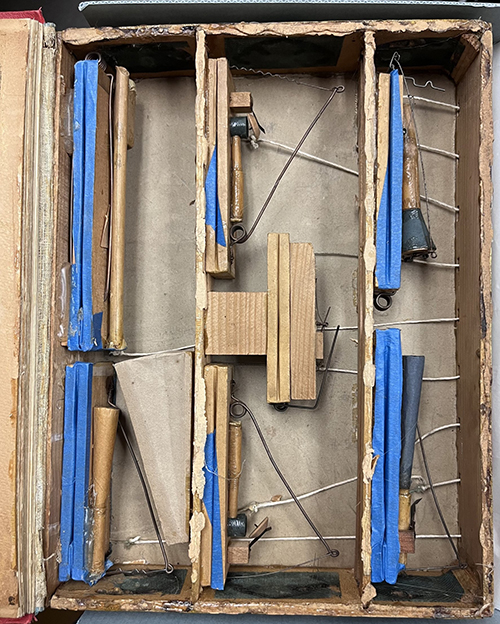

The Speaking Picture Book (1893) by Theodore Brand



Nineteenth-century Europe saw soaring literacy rates in their adults, but parents also wanted their children to read. As a result, several notable books were published, like Alice's Adventures in Wonderland (1865) and Orbis Sensualium Pictus (1658). People then became interested in the possibility of there being art in books, and how it would influence young readers. This is where people like Randolph Caldecott and Kate Greenaway came onto the scene, working to create eye-catching illustrations to accompany familiar words. Toy books, like pop-up and speaking picture books, were introduced and quickly became an entertaining way to introduce children to reading. Originally published in Nuremberg, Germany, in 1893, The Speaking Picture Book was the first of its kind. While originally published in German, it was also produced in English, French, and Spanish. F. A. O. Schwartz – a still famous New York toy store – distributed it in America; while H. Grevel & Co. handled the European market with ease.
Inside, there are 8 full-color illustrations of a rooster, a donkey, a lamb, birds, a cow, a cuckoo bird, a goat, and Mamma and Papa, each faced by a page of text in verse. On every page margin, there is an arrow that points to a string that is pulled to operate the mechanism hidden inside the book. When you pull and release the appropriate string, you are greeted by the sound representative of the illustration – the cow moos and the birds chirp!
How does it work? Think of an accordion. When you pull the string, a small bellow fills with air; when you release it, it compresses and air passes through nozzles and reeds, creating the appropriate sound. Unfortunately, the de Grummond copy has seen some wear and tear in its 131 years of existence, and not every mechanism works properly. Before coming to us, someone tried to repair the bellows with hot glue and painter's tape, and it is because of this repair that the book is still somewhat operational. Time has been rough to this amazing book, but it is still amazing. Watch this video on our Instagram (@usmdegrum) to see – or, rather, hear – this book in action!
An 1893 copy of The Speaking Picture Book is housed with the de Grummond Children's Literature Collection, call number PZ 8.3 .S73 1893. For more information on this item, contact Marge Sauls at .
Sources
https://www.mylearning.org/resources/the-speaking-picture-book-published-1893
http://www.booktryst.com/2011/09/say-hello-to-first-talking-book.html
https://www.publishersweekly.com/pw/by-topic/childrens/childrens-authors/article/91572-the-rise-of-the-picture-book.html
Haining, P. (1979). Movable books an illustrated history: Pages and pictures of folding, revolving, dissolving, mechanical, scenic, Panoramic, dimensional, changing, pop-up and other novelty books from the collection of David ANF Briar Philips. New English Library.
Text by Marge Sauls, Collections Specialist of the de Grummond Children's Literature Collection.